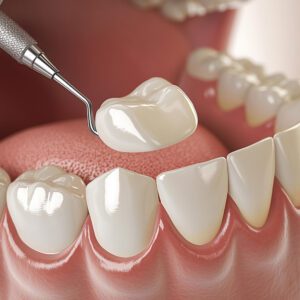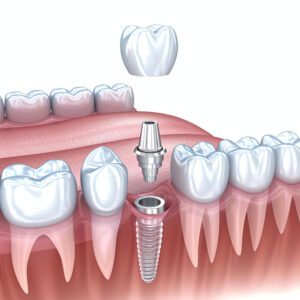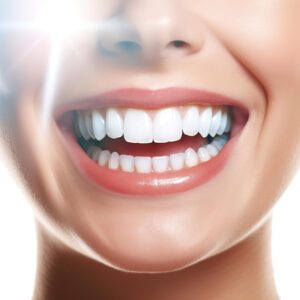Understanding Teeth Whitening
Teeth whitening is a cosmetic dental procedure designed to enhance the color of a person’s natural teeth, making them appear brighter and more aesthetically pleasing. This process involves the application of whitening agents that help to remove stains and discoloration caused by various factors such as aging, diet, tobacco use, and certain medications. There are two primary methods of teeth whitening: professional treatments conducted by dental professionals and at-home whitening products available for consumer use.
Professional teeth whitening typically occurs in a dental office and often employs stronger bleaching agents. Dentists usually take extra precautions to protect the oral tissues and ensure the safest and most effective results. In-office whitening treatments can yield immediate effects, often resulting in several shades of whitening after just one session. Techniques may include the use of lasers or high-concentration bleaching gels, which are optimized to achieve optimal results under professional supervision.
On the other hand, at-home whitening options provide convenience and flexibility for those seeking to brighten their teeth at their own pace. Such products come in various forms, including whitening strips, gels, and trays, which often contain lower concentrations of whitening agents compared to their professional counterparts. While these methods can also effectively lighten tooth discoloration, it may take more time to observe pronounced results. Users should carefully follow the product guidelines to achieve the best outcomes while minimizing potential side effects.
The duration of whitening effects can vary based on factors such as individual dental hygiene practices, consumption of staining substances, and the specific whitening method used. Generally, professional treatments can last longer than at-home methods, but maintaining those results requires diligent oral care. Understanding these differences is essential for setting realistic expectations regarding teeth whitening outcomes.
Why Whitening Effects Fade
Teeth whitening is a popular dental treatment that can significantly enhance the brightness of one’s smile. However, it is common for individuals to notice a gradual fading of these results over time. Several factors contribute to this decline in whiteness, and understanding them can empower individuals to take proactive steps in maintaining their bright smiles.
Firstly, dietary choices play a crucial role in the longevity of teeth whitening effects. Foods and beverages that are rich in pigments or acidity can contribute to staining. For instance, products like coffee, tea, red wine, and dark-colored fruits can lead to discoloration if consumed frequently. Habits such as smoking also expose teeth to tar and nicotine, which can lead to surface stains and ultimately diminish the impact of whitening procedures.
Additionally, intrinsic factors such as age and oral health can affect the brightness of teeth over time. As individuals age, the enamel on their teeth naturally wears down, revealing the yellowish dentin beneath. This process can result in a more subdued appearance, making previous whitening efforts less effective. Furthermore, dental conditions, such as cavities or gum disease, can complicate the maintenance of a white smile, as they may require treatments that can adversely affect tooth color.
Moreover, the type of whitening treatment used can also influence how long the results last. For example, at-home whitening kits might provide less durable outcomes compared to professional treatments from a dentist. The wear-and-tear on enamel and lifestyle choices significantly determine the retention of the whitening effects.
Being aware of these factors allows individuals to make informed decisions regarding their oral hygiene and lifestyle, ultimately supporting their efforts to maintain a bright, white smile effectively.
Immediate Steps After Whitening Treatment
Following a teeth whitening treatment, it is crucial to adhere to specific post-care instructions to maintain the results effectively. One of the primary considerations is to avoid certain foods and beverages immediately after the procedure. Typically, it is advised to steer clear of highly pigmented items such as coffee, tea, red wine, and deeply colored fruits and sauces. These substances can easily stain freshly whitened teeth, reversing the effects of the whitening treatment. Additionally, it is wise to avoid acidic foods and drinks, including citric fruits and sodas, as they can weaken enamel and make teeth more susceptible to staining.
Proper oral hygiene practices should also be emphasized in the immediate aftermath of whitening treatments. Delaying brushing for at least 24 hours is advisable to allow the enamel time to regain its natural protective barrier. Instead, one can rinse the mouth with water or a gentle mouthwash to help remove any residual whitening gel and maintain hydration. When resuming regular oral hygiene, use a soft-bristled toothbrush and non-abrasive toothpaste to avoid any potential irritation to sensitive teeth. Furthermore, incorporating a fluoride rinse can assist in providing additional protection and ensuring the enamel stays healthy and strong.
It is equally important to follow any professional recommendations provided by the dental practitioner. Dental experts often suggest scheduling a follow-up appointment to monitor the effects of the whitening treatment and to provide further oral care guidance. Adhering to these care tips can significantly enhance the longevity of the whitening results. Maintaining a bright smile is not only about achieving results but also about ensuring those results are preserved through mindful post-treatment practices.
Best Foods and Drinks for Keeping Teeth White
Maintaining a bright smile after a teeth whitening treatment involves not only good oral hygiene practices but also being selective about the foods and drinks consumed. Certain items can stain teeth, while others can help preserve their whiteness. It is crucial to be aware of both categories to make informed dietary choices.
To begin with, it is advisable to avoid highly pigmented beverages and foods that can lead to staining. Beverages such as coffee, tea, red wine, and dark sodas are known for their potential to discolor teeth. In addition, sauces like soy sauce, tomato sauce, and certain dark berries may also contribute to teeth staining. Furthermore, foods that are acidic can erode enamel, making teeth more susceptible to discoloration. Limiting the intake of these items can be beneficial for those who have recently undergone whitening treatments.
On a positive note, numerous foods and drinks can help sustain the whiteness of your teeth. Water is a vital choice as it aids in rinsing away food particles and bacteria that can lead to staining. Dairy products, including cheese, yogurt, and milk, contain calcium and phosphorus, which are essential for remineralizing enamel, ultimately supporting a healthy smile. Crunchy fruits and vegetables, such as apples, carrots, and celery, not only contribute to overall dental health but also have a natural scrubbing effect that can help remove surface stains.
Moreover, strawberries and baking soda are often cited as natural teeth whiteners due to their mild abrasive properties and high vitamin C content. Incorporating these foods while maintaining a balanced diet can prove advantageous for tooth brightness. Regular dental visits and a consistent oral care routine will further reinforce the effects of these dietary practices. By making informed choices about what you consume, you can maintain the results of your whitening treatments effectively.
Oral Hygiene Practices to Uphold Brightness
Maintaining the brilliance of your bright smile begins with an effective daily oral hygiene routine. The fundamental practices of regular brushing and flossing play a crucial role in keeping your teeth white after a whitening treatment. Brushing twice a day, preferably with fluoride toothpaste, helps remove surface stains and prevents the accumulation of plaque, thus preserving the whiteness achieved through whitening procedures. It is essential to gently brush for at least two minutes to ensure all areas of the mouth receive adequate attention.
Flossing, often an overlooked aspect of oral care, is equally important. By cleaning between the teeth and reaching areas where a toothbrush cannot, flossing helps prevent cavities and gum disease, which can contribute to discoloration over time. Incorporating this step into your daily routine is necessary for comprehensive oral health.
Selecting the right toothpaste can further enhance your efforts in maintaining white teeth. While regular fluoride toothpaste is essential for cavity prevention, using whitening toothpaste can provide an added benefit. These specialized formulas often contain mild abrasives or chemical agents designed to break down stains on the tooth surface. Opt for toothpaste that is ADA-approved to ensure safe and effective whitening without damaging enamel.
Mouth rinses can also play a supportive role in your oral hygiene regimen. Antimicrobial mouthwashes not only combat bacteria that cause bad breath but can also help prevent plaque buildup, thereby contributing to the maintenance of your bright smile. For those seeking additional whitening benefits, consider rinse options that include whitening agents designed to support the effectiveness of whitening treatments.
Combining these practices with regular dental check-ups will further enhance your ability to maintain a bright smile. Engaging in these daily habits will reinforce your commitment to oral hygiene and ensure your smile remains vibrant and healthy for years to come.
Lifestyle Habits That Affect Tooth Color
The color of one’s teeth can be significantly influenced by various lifestyle habits. Certain behaviors, particularly smoking, excessive alcohol consumption, and an unhealthy diet, can lead to discoloration, impacting the overall appearance of the smile. Recognizing these lifestyle factors is crucial for maintaining a bright, white smile post-whitening.
Firstly, smoking is one of the primary culprits behind stained teeth. The nicotine and tar found in tobacco products can create stubborn brown or yellow stains on the enamel, which are notoriously difficult to remove. Those looking to maintain white teeth should consider quitting smoking or at least reducing their tobacco intake. This not only benefits dental aesthetics but also enhances overall oral health and reduces the risk of gum disease.
Similarly, excessive alcohol consumption can contribute to tooth discoloration. Many alcoholic beverages, especially red wine and dark-colored drinks, contain chromogens that can cling to the enamel and lead to staining over time. Moderation is key; reducing intake or opting for lighter options can mitigate potential discoloration. Staying hydrated with water after consuming such beverages can help wash away residues that lead to stains.
Moreover, dietary choices play a significant role in tooth color. Foods high in sugar and acidity can compromise enamel integrity, making teeth more susceptible to staining. To promote whiter teeth, individuals should focus on a balanced diet rich in fruits, vegetables, and dairy products. Crunchy fruits and vegetables, like apples and carrots, can naturally scrub the teeth while providing essential vitamins.
Being mindful of these lifestyle habits, individuals can adopt healthier living practices. This proactive approach not only contributes to a brighter smile but supports long-term dental health.
Regular Dental Check-Ups: The Key to Whiteness
Maintaining a bright smile is not solely a matter of periodic whitening treatments; regular dental check-ups play a critical role in the long-term upkeep of tooth whiteness. Routine dental appointments enable professional cleanings that effectively remove surface stains, which can accumulate from the consumption of food and beverages that stain teeth, such as coffee, red wine, and berries. During these cleanings, dental hygienists employ specialized tools and techniques designed to polish teeth, significantly contributing to a brighter appearance.
Moreover, regular visits to the dentist facilitate a deeper understanding of an individual’s oral health. Dentists not only conduct cleanings but also provide invaluable guidance on maintaining whiteness post-treatment. They might recommend specific dental care products or at-home practices that align with a person’s unique dental condition. For example, a dentist may suggest certain toothpaste formulations or dietary modifications that help maintain the vibrancy of whitened teeth while minimizing further staining.
Another key benefit of consistent dental check-ups is the early detection of potential issues, such as cavities or gum disease, which could ultimately influence the color of your teeth. Conditions like tartar buildup or enamel wear can lead to discoloration, undermining your efforts to maintain that sought-after brightness. By identifying and addressing such problems early, dentists can help prevent further deterioration of tooth color, ensuring your smile remains bright and healthy.
In essence, scheduling regular dental appointments is a proactive approach to preserving the effects of whitening treatments. Such appointments provide comprehensive care that not only enhances the overall look of your smile but also safeguards your dental health, allowing for the maintenance of a bright, white smile for years to come.
At-Home Maintenance Solutions
Maintaining a bright and white smile requires consistent effort, particularly following professional whitening treatments. At-home maintenance products such as whitening strips, gels, and trays have gained popularity as effective solutions for sustaining the results of teeth whitening. These products offer accessibility and convenience, allowing individuals to continue their whitening routine in the comfort of their own homes.
Whitening strips are one of the most commonly used at-home options. They are thin, flexible pieces of plastic coated with a whitening gel that adheres to the teeth. Most products suggest a wearing time of 30 minutes to an hour, depending on the formula’s strength. Their ease of use and almost invisible nature make them a preferred choice for many users. However, their effectiveness can vary based on the individual’s dental condition and adherence to the application instructions.
Whitening gels are another popular alternative. These are typically applied directly to the teeth using a brush or a tray. Some gels are designed to be used in conjunction with custom-fitted trays, which can better conform to the shape of one’s mouth and promise even coverage. This method often provides more significant and longer-lasting results, though it may require a longer commitment in terms of application time each day.
Trays represent a versatile option as well. Over-the-counter whitening trays are available, or individuals can opt for custom trays made by their dentist for a better fit. Custom trays can enhance the distribution of the whitening agent, maximizing results and minimizing discomfort. Regardless of the method chosen, it is crucial to follow the manufacturer’s instructions and consult with a dental professional to ensure safety while incorporating these products into your dental hygiene routine.
When to Seek Professional Help
Maintaining a bright smile after undergoing teeth whitening procedures is essential, yet it is equally important to recognize the signs that indicate a need for professional intervention. While a majority of individuals may experience satisfactory results, some may encounter issues that require a dentist’s expertise. One common sign that it may be time to seek professional help is the appearance of stubborn stains. If despite regular dental care and adherence to whitening recommendations, certain areas on your teeth remain discolored, consulting a dental professional is advisable. They can assess the issue thoroughly and recommend tailored solutions based on the underlying causes of the staining.
Another critical factor to consider is sensitivity. Many people experience heightened sensitivity following whitening treatments, but when this sensitivity becomes persistent or worsens, it is essential to revisit your dentist. Prolonged discomfort may indicate an underlying dental issue, such as enamel erosion or gum recession, which warrants immediate attention. A dentist can help determine the cause of the sensitivity and provide appropriate treatments to alleviate the discomfort while safeguarding your oral health.
Additionally, if you notice unusual changes in your oral health, such as swollen gums, persistent bad breath, or any lesions in your mouth, these may signal underlying problems that should not be ignored. These symptoms can be indicative of gum disease or other oral health conditions that require prompt professional evaluation. By monitoring your oral health after whitening treatments and seeking assistance at the first sign of trouble, you can ensure that your bright smile is not compromised and that your teeth remain healthy and vibrant.













